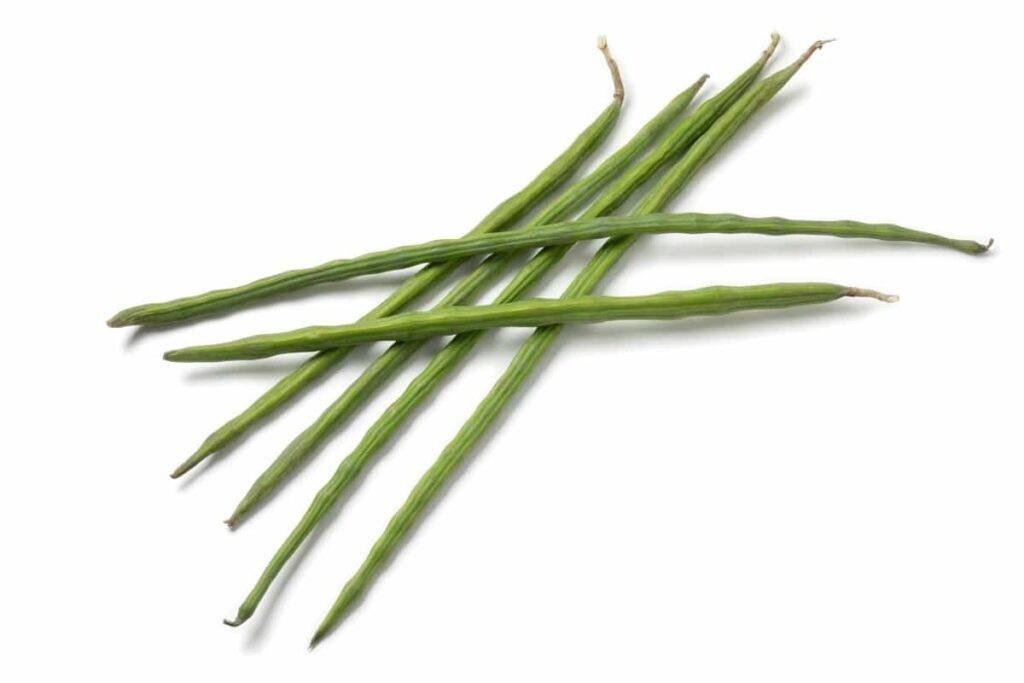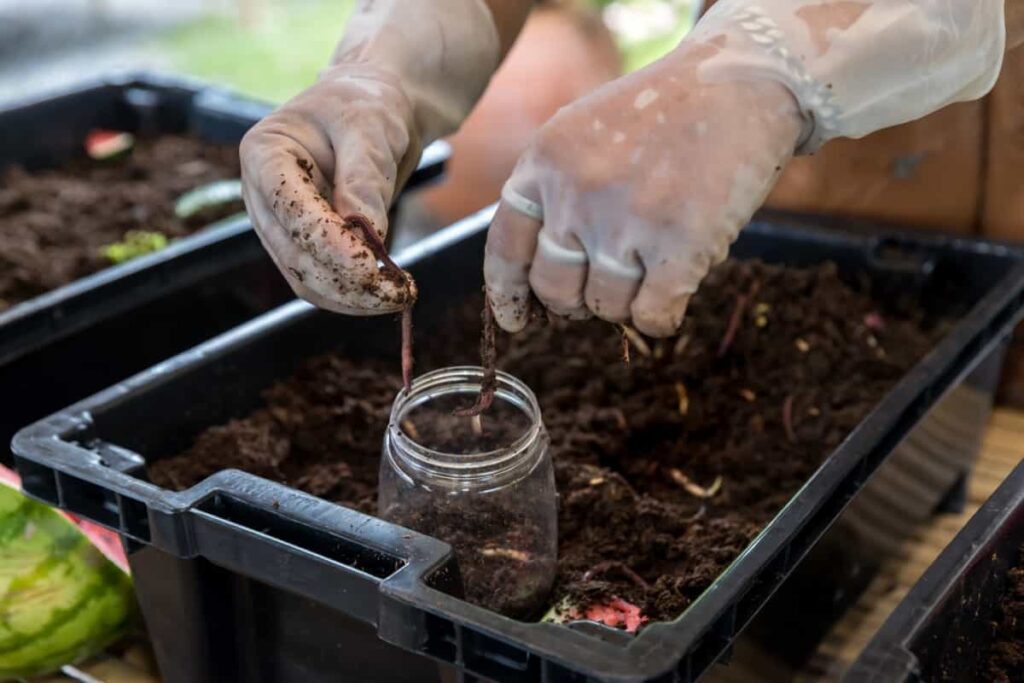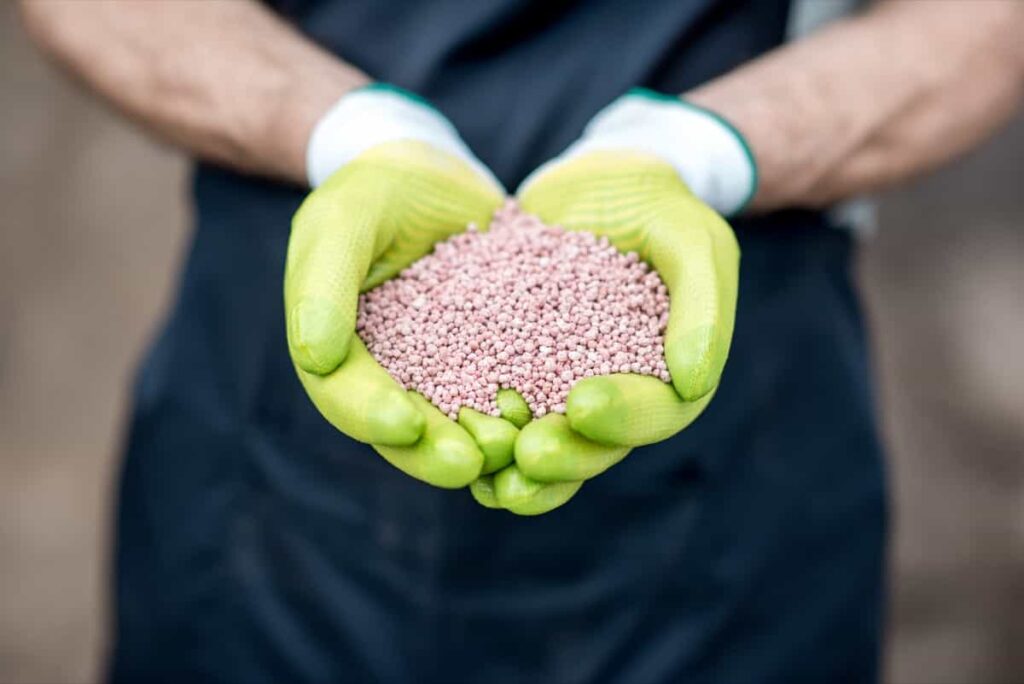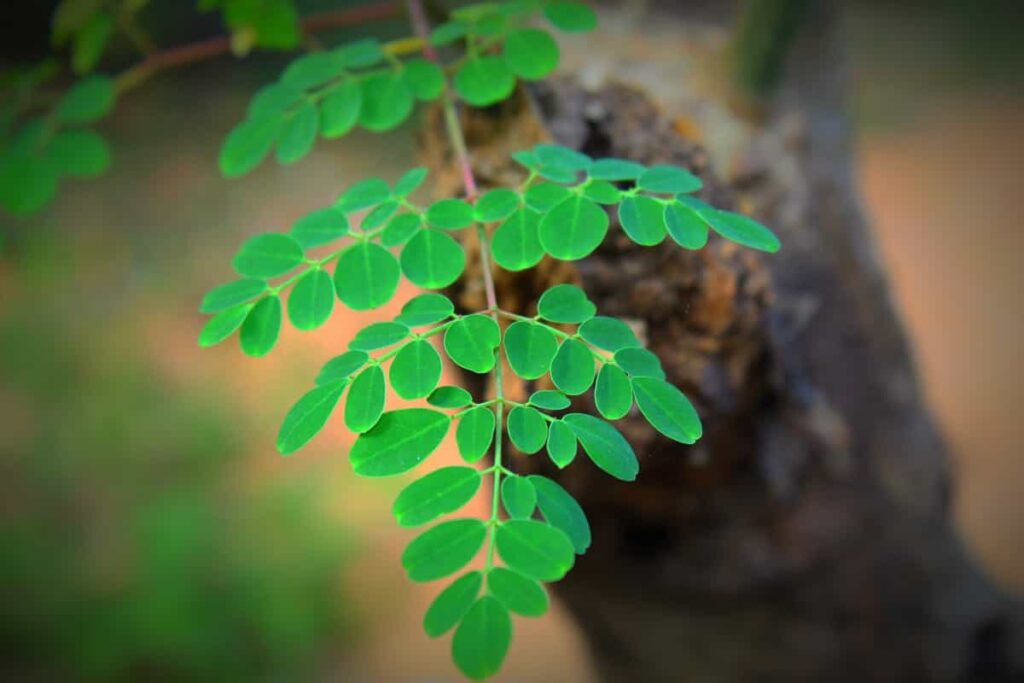Moringa, also called as the “miracle tree” or “tree of life,” is a versatile plant used for centuries as a food source. Fertilizer management plays a crucial role in the growth and development of Moringa trees. Moreover, fertilizer application improves nutrient uptake efficiency by providing readily available nutrients to the roots. This ensures that Moringa plants receive an adequate supply of essential elements throughout their life cycle.

Moringa has specific needs when it comes to fertilization. It requires nitrogen (N), phosphorus (P), and potassium (K) for optimal growth and development. These macronutrients play different roles in the plant’s overall health – nitrogen promotes leafy growth, phosphorus supports root development, and potassium enhances fruiting and flowering.
Alongside these macronutrients, Moringa also requires essential micronutrients such as iron, zinc, manganese, copper, boron, molybdenum, and chlorine. To ensure effective fertilization of Moringa plants, it’s essential to conduct soil tests to determine nutrient deficiencies or imbalances. This will help tailor your fertilizer application accordingly.
Best Fertilizer for Moringa
Understanding the Benefits of Using Organic Fertilizer for Moringa Growth
Organic fertilizers have numerous benefits for Moringa growth. They are derived from natural sources such as compost, manure, and plant residues. Furthermore, organic fertilizers improve soil structure and enhance microbial activity. They promote healthy root development and increase nutrient uptake efficiency in Moringa plants.
As a result, the trees become more resilient to pests and diseases while producing higher yields. Another advantage of using organic fertilizers is their positive impact on environmental sustainability. One of the best organic fertilizers for Moringa is compost. Made from decomposed organic matter like kitchen scraps and yard waste, compost enriches the soil with a wide range of nutrients. Worm castings are another organic fertilizer.
Earthworms produce these tiny pellets as they digest organic material. Packed with beneficial bacteria and enzymes, worm castings improve soil structure and fertility while providing slow-release nutrients over time. If you’re looking for a quick nitrogen boost, consider using a blood meal or feather meal. Both are derived from animal sources and deliver a concentrated dose of this essential nutrient to fuel leafy green growth in your Moringa tree.
The Importance of Natural Fertilizers in Enhancing Moringa Plant Health
Using natural fertilizers is essential for enhancing the health of Moringa plants. Unlike synthetic fertilizers, natural options provide a range of benefits that promote overall plant growth and development. Natural fertilizers release nutrients slowly, providing a steady supply for Moringa plants. Moreover, natural fertilizers improve long-term soil health by increasing organic matter content and improving moisture retention capabilities.
One great option for natural fertilizer is compost. Composting organic waste reduces landfill waste and produces nutrient-rich soil amendments. You can create your compost pile using kitchen scraps, plant trimmings, and yard waste. Once it decomposes into dark, crumbly compost, spread it around the base of your Moringa tree for a slow-release source of nutrients.
Another choice is vermicompost or worm castings. These are created by feeding organic matter to earthworms, producing rich humus-like fertilizer. Worm castings are packed with beneficial microorganisms and essential nutrients growth in Moringa trees. If you prefer liquid fertilizers, seaweed extract is an excellent option as it contains trace elements and growth-promoting hormones.
In case you missed it: How to Grow Moringa Tree from Seeds in Backyard: Planting and Care in Winter

Dilute the extract according to package instructions and apply it to your Moringa plants as a foliar spray or through watering. Consider using bone meal or fish emulsion as natural alternatives for phosphorus-rich fertilization. These products provide valuable macronutrients for Moringa trees’ root development and flower production.
Homemade Fertilizer Recipes for Optimal Moringa Growth and Development
Banana peel tea – Take a few ripe banana peels and soak them in water for several days. The nutrients from the bananas will leach into the water, creating a nutrient-rich tea that can be applied to your Moringa plants.
Compost tea – Take some well-aged compost and steep it in water for a few days. This infusion will provide essential nutrients that promote healthy growth in your Moringa trees.
Eggshell – If you’re looking for something quick and easy, eggshell fertilizer is a fantastic choice. Collect used eggshells, crush them into small pieces, and sprinkle them around the base of your Moringa plants. Eggshells are rich in calcium, which helps strengthen roots and improve overall plant health.
Coffee grounds – Coffee grounds are another excellent source of organic matter for homemade fertilizers. Mix coffee grounds with soil or sprinkle them directly on top as mulch to enrich the soil with an NPK ratio suitable for growing Moringas.
Exploring the Ideal NPK Ratio for Moringa Fertilization
NPK are the three main macronutrients that Moringa plants need in varying amounts. In the case of Moringa trees, they have a preference for fertilizers with an NPK ratio of 2:1:1. By providing the right balance of these nutrients through fertilizer application; you can ensure optimal growth and yield from your Moringa trees. However, it’s important not to overdo it with fertilization as excess nutrients can lead to imbalances or damage the tree.
To determine the fertilizer needed for your Moringa trees, consider soil composition and pH levels. Regular soil tests can help you understand any deficiencies or excesses in nutrient levels. Achieving the ideal NPK ratio requires careful consideration of your specific growing conditions and understanding the nutritional requirements of your Moringa trees.
Creating a Fertilization Schedule for Maximum Moringa Yield and Nutrient Uptake
The fertilization schedule ensures that the plants receive the right amount of nutrients at the right time, promoting healthy growth and development. To start, it’s important to understand the specific nutritional requirements of Moringa. In the early stages, Moringa requires more nitrogen to support leaf production. As flowering begins, phosphorus becomes crucial for reproductive development. During fruiting, potassium plays a vital role in promoting healthy fruit formation.
In case you missed it: How to Grow Moringa Tree Faster: Best Tips to Increase Flowering, Fruiting, and Production Yield

It’s important to note that organic fertilizers are preferred for Moringa cultivation due to their slow-release nature and overall sustainability benefits. Incorporating compost or vermicompost into your fertilizer mix can provide long-term nutrition while improving soil health. Regular monitoring of soil pH levels is also crucial when creating a fertilization schedule for Moringa plants.
Organic vs. Synthetic Fertilizers: Which is Better for Moringa?
Organic fertilizers are natural sources such as compost, manure, or plant materials. They provide slow-release nutrients that nourish the soil over time, promoting soil health and microbial activity. This holistic approach supports the growth of your Moringa plants and contributes to long-term sustainability in cultivation.
In case you missed it: Best Fertilizer for Red Lady Papaya: Schedule of Organic, Liquid, Natural, Homemade, NPK Fertilizers

On the other hand, synthetic fertilizers are chemically formulated to deliver specific nutrients quickly to plants. These commercial products often contain high levels of nitrogen, phosphorus, and potassium (NPK), which can give your Moringa trees an immediate boost in growth. However, they may lack essential micronutrients found in organic alternatives. It’s important to consider both short-term results and long-term environmental impacts when choosing between organic and synthetic fertilizers for your Moringa plants.
The Role of Micronutrients in Moringa Fertilization and Plant Health
One main micronutrient for Moringa is iron. Iron deficiency can lead to yellowing leaves and stunted growth. Adding iron chelates or organic sources like seaweed extract can help address this issue. Another vital micronutrient is zinc. Zinc deficiency affects leaf size and color, as well as fruit development. Applying zinc sulfate or using compost enriched with zinc can rectify this problem.
Manganese is essential for photosynthesis and enzyme activation in Moringa plants. Deficiency symptoms include interveinal chlorosis on young leaves. Remedies include manganese sulfate application or incorporating manure high in manganese into the soil. Copper plays a significant role in root development and overall plant vigor.
Copper deficiency manifests as twisted shoots and wilting leaves with darkened tips. A copper fungicide spray or adding copper-rich materials like bone meal can combat this issue. Boron aids cell wall formation, flower development, and pollination in Moringa trees. Boron deficiencies result in distorted new growth and poor flowering patterns. Using borax or applying compost infused with boron can alleviate this problem.
How to Make Your Own Organic Moringa Fertilizer at Home?
One method is to use kitchen scraps and vegetable waste. Collect fruit peels, coffee grounds, eggshells, and other plant-based leftovers. Blend them in a food processor or chop them finely before adding them to your compost pile. Another option is to make a compost tea. Fill a bucket with water and add compost or vermicompost into it. Let it steep for some days, stirring occasionally. Then, strain the liquid and dilute compost with water before using it as a natural fertilizer for your Moringa plants.
You can also make an effective organic fertilizer by fermenting weeds or grass clippings in water. Fill a container with these green materials, cover them with water, and let them sit for several weeks until they decompose into a nutrient-rich liquid that can be diluted and applied directly to the soil around your Moringa trees. You can utilize animal manure from herbivores such as horses or cows. Mix the manure with straw or wood shavings to provide carbon-rich material that helps prevent odor formation during decomposition.
The Benefits of Slow-Release Fertilizers for Long-Term Moringa Growth
One advantage of using slow-release fertilizers for Moringa is reducing the risk of nutrient leaching. Slow-release fertilizers release nutrients into the soil, ensuring that they are available for plant uptake without being wasted. Another benefit is that slow-release fertilizers promote healthier root development. In addition, slow-release fertilizers improve soil health and fertility over time.
As these fertilizers break down slowly, they enhance microbial activity in the soil, promoting beneficial bacteria and fungi that aid in nutrient cycling and organic matter decomposition. Furthermore, using slow-release fertilizers reduces the frequency of fertilizer application since their effects last longer than conventional options. This saves both time and money for Moringa growers while ensuring continuous nutrient availability for optimal plant growth.
In case you missed it: Fertilizer Schedule Chart for Indoor Plants: Season-wise Homemade, Organic, Natural, and Liquid Fertilizer Calendar

Exploring the Role of Compost in Moringa Fertilization and Soil Enrichment
Compost plays a crucial role in supplying vital organic matter to the soil. The rich humus created by compost helps improve soil structure, allowing better water retention and drainage. This is especially important for Moringa trees, which thrive in well-drained soils. In addition to enhancing soil structure and nutrient availability, compost promotes beneficial microbial activity in the soil.
To use compost effectively in Moringa fertilization, ensure it is well-aged before application. This allows any potential pathogens or weed seeds in raw materials used for compost to decompose completely. Apply a compost layer around the base of each tree or mix it into the topsoil during planting.
Using Vermicompost as an Effective Organic Fertilizer for Moringa Plants
Using vermicompost as an organic fertilizer for Moringa plants can greatly enhance their growth and overall health. Vermicompost, also known as worm castings, results from earthworms breaking down organic matter, such as kitchen scraps or plant waste. Using vermicompost is the ability to improve soil structure and fertility. It enriches the soil with beneficial microorganisms that promote nutrient absorption by Moringa roots.
Additionally, vermicompost contains essential nutrients like nitrogen, phosphorus, and potassium that are vital for Moringa’s growth. Moreover, vermicompost enhances soil water retention while improving drainage capabilities. This helps prevent waterlogged conditions that could harm Moringa plants. To use vermicompost effectively, mix it into the topsoil around your Moringa plants during planting or apply vermicompost as a top dressing throughout the growing season. The recommended application rate is around 2-3 inches deep.
The Impact of Organic Fertilizers on Soil Health and Sustainability in Moringa Cultivation
Organic fertilizers are natural sources such as compost, manure, and plant-based materials. When these fertilizers are applied to the soil, they improve soil structure and enhance its ability to retain water. This is especially important for Moringa trees since they require well-drained soil and adequate moisture for optimal growth.
The use of organic fertilizers also promotes beneficial microbial activity in the soil. These are crucial in breaking down organic matter into usable forms for plant uptake. They aid in nutrient cycling and contribute to overall soil fertility.
Tips for Applying Organic Fertilizers to Avoid Overfertilization in Moringa Plants
One tip is always to follow the recommended dosage mentioned on the fertilizer packaging or consult an expert for guidance. Applying more than the required amount may seem beneficial, but it can negatively affect plant health. Another tip is to apply organic fertilizers evenly throughout the growing area rather than concentrating them in one spot. This ensures uniform distribution of nutrients and prevents localized nutrient imbalances.
It’s best to apply them during periods of active growth when plants are actively taking up nutrients. Avoid applying fertilizers during dormancy periods, which can lead to nutrient wastage. Regularly monitoring plant health is essential to identify signs of overfertilization, such as leaf burn or stunted growth. Adjusting fertilizer application based on plant response is key to avoiding overfertilization.
The Importance of pH Balance in Moringa Fertilization and Plant Nutrition
Maintaining the proper pH balance in your Moringa fertilization ensures optimal plant nutrition and growth. The soil’s pH level directly affects the availability of essential nutrients to the plants. Moringa trees thrive best in slightly acidic to neutral soil with a pH range between 6.0 and 7.5. Regularly testing your soil’s pH levels is important so any necessary adjustments can be made through amendments such as lime or sulfur-based products.
In case you missed it: 15 Best Neem Oil for Plants in India: Our Top Picks for Affordable Neem Oil for Indoor and Outdoor Plants

Fertilizer Schedule in Moringa
| Different plant growth stages | Type of fertilizers | Application Time |
| Seedling Stage (0-4 weeks) | Apply nitrogen-rich organic fertilizers such as compost or well-decomposed manure. | Apply every two weeks to promote strong root development. |
| Vegetative Stage (4-8 weeks) | Apply NPK fertilizers with higher nitrogen content. | Apply every three weeks to support lush foliage growth. |
| Flowering Stage (8-12 weeks) | Apply phosphorus-rich fertilizers like bone meal or rock phosphate to encourage flower formation and fruit set. | Apply every four weeks until harvest. |
| Fruit Development Stage (12+ weeks) | Apply potassium-rich fertilizers such as wood ash or kelp extract to enhance fruit quality and ripening. | Apply every six weeks until harvest. |
Conclusion
Moringa trees have specific nutritional requirements, particularly nitrogen and phosphorus, vital for healthy foliage and root development. Fertilizers help replenish these nutrients, ensuring optimal plant health. Proper fertilizer management in Moringa trees also promotes improved fruiting and flowering. By providing a balanced blend of nutrients at the right time, you can encourage abundant blooms and increase fruit production. Using the right fertilizers can enhance their productivity and ensure a bountiful harvest.
- Crops Grown in Summer Season: Best Choices for Summer Gardening
- Organic Pest Control for Tomato Farming
- How to Maximize Sheep Farming Profit
- Broccoli Varieties: Choosing the Right Cultivars for Your Farm
- How to Raise Pigs in Your Own Backyard: A Comprehensive Guide
- Budget Friendly Sheep Shed Ideas: Cheap and Low-Cost Tips
- How Much Do Cattle Farmers Make: Revenue Streams in Cattle Farming
- Management Pests and Diseases in Your Cotton Field
- Sheep Farming Business Plan for Beginners
- Aquaponic Farming at Home: A Step-By-Step Guide
- Profitable Village Farming Business Ideas in 2024
- High-Yield Aquaculture: Fast-Growing Fish for Farming
- Effective Fish Pond Construction Techniques for Beginners
- Irrigation and Water Management in Pineapple Farming
- Blossom to Harvest: Mastering Flowering and Pollination in Papaya Farming
- Pig Fattening Essentials: From Selection to Sale for Beginners
- Raising Wagyu Cattle: A Complete Guide for Premium Beef Production
- Soil Types and Their Water Holding Capacity
- Optimizing Irrigation Schedules for Coconut Groves for Enhanced Yield
- Espresso Your Garden: Coffee Grounds for Healthier Acid-Loving Plants
- The Best Soil Mix for Snake Plants: How to Mix Your Own Snake Plant Soil
- Green Thumb Success: Expert Tips for Cultivating Greenhouse Beans All Year Round
- Bloom All Year Round: The Ultimate Guide to Indoor Hyacinth Care
- Eco-Friendly Gardening: How to Make Liquid Fertilizer from Kitchen Waste
- Ultimate Guide to Grow Anise in Pots: Explore Seed Propagation to Harvesting
- Guide to Raising Chester White Pigs: Discover Breed Facts to Growth Management
- Mastering the Elegance: The Ultimate Guide to Weeping Cherry Tree Care, Planting, and Maintenance
- Ultimate Guide to Planting Garlic in Grow Bags: Growing Strategies for Beginners
- How to Fix Spider Plant Leaf-Related Problems: Natural and Organic Remedies
- 10 Reasons Why Your Tulsi Plant is Shedding Leaves: Home Remedies and Solutions
- Optimizing Growth and Yield: The Advantages of Palm Bunch Ash Fertilizer
- Utilizing Neem Oil Extract as a Natural Pesticide for Hydrangea
- From Soil to Harvest: Various Ways in Which Farmers Can Use AI Tools
- Steps to Encourage and Induce Citrus Flowers: A Comprehensive Guide
- How to Fix Snake Plant Leaf-Related Issues: Natural and Organic Remedies
- Transform Your Garden into a Fragrant Oasis with Raat Ki Rani (Night Blooming Jasmine)

Useful information.